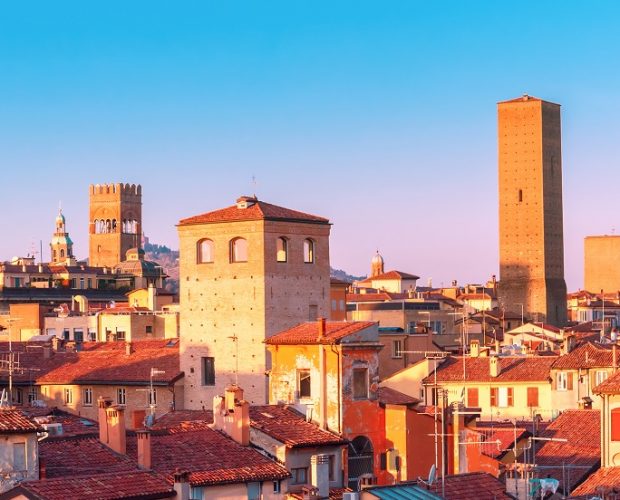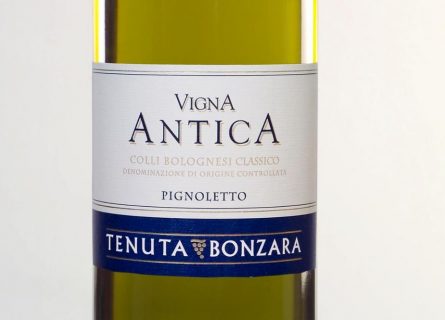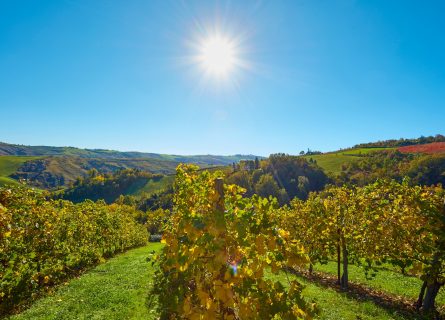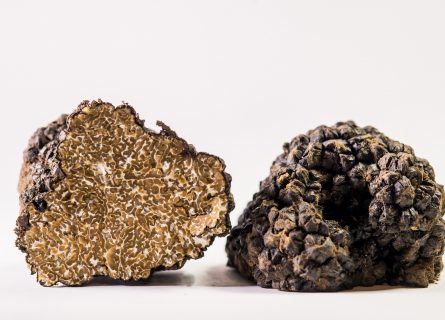Explore Bologna, Italy's lively university town with historic charm, renowned cuisine, and vibrant culture in its sprawling Centro Storico.
Read more
EXPLORE ALL OUR EMILIA-ROMAGNA WINE REGIONS GUIDE
Last updated: May 25, 2024
There are many parallels between Colli Bolognesi and its opposite number, Colli Piacentini. These appellations in Emilia-Romagna languished in obscurity in the 20th century, only achieving a reasonable degree of international recognition over the past decade or so. Both appellations had to work tremendously hard to achieve the respect they deserve, with a strong emphasis on French grapes – Cabernet Sauvignon, Merlot, and Chardonnay – helping to achieve a breakthrough in export markets. Neither can their historical pedigree be questioned: the ancient Etruscans first planted vines in Emilia-Romagna over two Millennia ago, a tradition enthusiastically embraced by the Romans. Yet, reliance on international styles has put off some aspects of the trade, notably trend-conscious sommeliers and younger buyers, from taking Colli Bolognesi more seriously.
This diverse collection of grape varieties and wines deserves full appreciation. Today’s finest northern Italian whites include the best Chardonnays and the indigenous grape Pignoletto. The local expressions of Cabernet Sauvignon differ significantly from the red wines of Bordeaux and even those of Bolgheri further south. Beyond the tried and tested favorites of supermarkets and large retail stores, there is originality to discover here.
The hills south of Bologna offer prime vineyard real estate: soil, aspect, elevation, and climate are all highly favorable. Indeed, it can seem that every parcel of vines faces in a slightly different direction. When deciding where to plant certain varieties, altitude, and aspect are important considerations, while the appellation framework allows a generous selection of grapes to be grown. Thus, if diversity is as fashionable as the marketeers claim, Colli Bolognesi must be the most trendy vineyard in northeastern Italy.
Today, there are approximately 80 hectares under vine in the zone, nestled in the spectacular Apennine foothills to the southwest of Bologna. Here, you’ll discover a complex web of mesoclimates and terroirs, including (but not limited to) sandstone, clay-limestone, alluvial soils, and sand. The climate, meanwhile, shows distinctly continental flourishes: warm summers and cold winters lack the humidity of the coastal regions. Consequently, fungal diseases are less of a problem in the Emilia-Romagnan interior.
Historically, the region is divided into seven subzones: Colline di Oliveto, Colline di Riosto, Colline Marconiane, Monte San Pietro, Serravalle, Terre di Montebudello, and Zola Predosa. Each of these individual climats (vineyard sites) can be referenced on the front label in a manner that invokes the Burgundian classification system of terroir first and winemaking second. Furthermore, wines made under the auspices of the Terre di Montebudello cru, for example, must conform to a stricter set of production requirements than the regulations that govern ‘generic’ Colli Bolognesi wines.
Prominent Subzone and Varietal Specialties
But perhaps the most prestigious subzone of all is the Colli Bolognesi Pignoletto. Promoted to DOCG status in 2010, it is the seminal home of Grechetto di Todi or Pignoletto as it is still often called. To the west of Bologna, in a series of undulating green hills, growers produce exceptional still and sparkling wines from the region’s signature white grape occasionally enlivened with international varieties and even a dash of Pinot Noir (as long as no color is extracted from the berries).
Much like Romagna Albana, Grechetto di Todi yields aromatic and very crisp dry whites, renowned for their brisk freshness and cut of acidity. It thrives on the zone’s clay-limestone soils, particularly when cultivated at higher elevations. Diurnal temperature variation also plays a vital role in moderating summer heat and preserving freshness in the wines due to the noticeable difference between day and night temperatures that slows a vine’s metabolism. Without this natural advantage, producing saline dry whites in warmer climes would be next to impossible.

No one could ever accuse Colli Bolognesi of lacking variety. The generous volume of international grape varietals, marketed by niche producers and companies alike, includes the exceptional, the execrable, and everything in between! There is also a respectable amount of delicious sparkling made in these hills: traditional method and Charmat.
Moreover, in Emilia-Romagna, labeling wines by varietal is not considered a sin—many of Europe’s more conservative destinations ban the mention of grapes on labels. However, as long as the stated variety constitutes at least 85 percent of the final blend, it can be referenced on the bottle, according to the regional Consorzio. As a rule, the most impressive globalized drops are the mineral-infused Chardonnays and elegant Cabernets, although the quality of local Pinot Bianco and Merlot is a close second.
Grechetto di Todi: The Star Grape of Colli Bolognesi
Nevertheless, the superlative Grechetto di Todi, to use its modern title, has no rival as Colli Bolognesi’s star grape. Today, it accounts for over 50 percent of the zone’s annual production – both still and sparkling versions. To date, the finest examples are made in the vineyards of Colli Bolognesi Pignoletto DOCG, where cool fermentations in steel tank – or concrete – yield bottled magic. Well-structured, fragrant, and unbelievably refreshing, Grechetto di Todi can hold its own against Albariño or Sauvignon Blanc. The cream of the crop is marketed as ‘Superiore Classico,’ a style that requires a minimum of 95% Grechetto di Todi.
The Classico suffix indicates the original production zone, which expanded in 2014, while Colli Bolognesi Pignoletto only needs to contain a minimum of 85% Grechetto di Todi. Some very worthwhile fizz, meanwhile, is starting to garner broader interest from non-Italian consumers as the market for affordable bubblies remains relatively buoyant.
So, too, are skin contact versions and gently effervescent pét-nats (a continuation of the primary fermentation in bottle is responsible for their moderate sparkle) making waves in hipster circles; a touch of barrique can add class and texture to still wines, although an excess of new oak subjugates the fruit to an undesirable degree.
Barbera, the Other Key Attraction
The appellation’s other key attraction is undoubtedly the glamorous Barbera – now the height of fashion. Once ignored in favor of the (then) super-trendy Cabernet Sauvignon and Merlot, Barbera is a strong contender for the zone’s most promising red grape in 2024. While Emilia-Romagnan Cabernet is often a medium-bodied and tannic creature that demands time and attention, Barbera, gently vinified in stainless steel, is a floral, deep purple delight. A touch of aging in French barrique is also usually welcome, adding polish and verve. The grapes are normally picked earlier than Cabernet, although the variety needs relatively warm sites to ensure that acidity and fruit are in perfect harmony. The results in bottle can be memorable: pungent, silky smooth, and capable of a marvelous balance between ripeness and tannic bite that goes fantastically well alongside the rich dishes of Bologna.

Although Colli Bolognesi is no Chianti Classico (in terms of global recognition, anyway), the region’s reputation is growing at an impressive rate. The appellation now boasts over 75 wineries; with a few exceptions, most producers commit to growing quality wine. Meanwhile, Colli Bolognesi and Colli Bolognesi Pignoletto may well be the best source of aromatic dry whites in Emilia-Romagna, although Colli Piacentini provides healthy competition.
Of course, imported grapes first put Colli Bolognesi on the vinous map. However, Grechetto di Todi and Barbera are currently making great strides and generating more buzz overseas! Yet, wine lovers can still struggle to grasp precisely what Colli Bolognesi can offer them. After all, Cabernet Sauvignon and Merlot are ubiquitous the world over. Do we really need any more?
Consider Colli Bolognesi a cooler-climate version of Tuscany’s Maremma. And expect (generally) equivalent standards in terms of winemaking and viticulture, galvanized by a dynamic Consorzio that has the buy-in of its members. However, while Cabernet Sauvignon and Chardonnay shine as brightly in western Tuscany as in Emilia-Romagna, the latter yields wines with more bite and acidity due to a combination of cooler summers and higher altitude.
Innovation and Diversity in Wine Production
Producers and growers continue experimenting and pushing boundaries while exploring new blends and approaches to fermentation. Both Pinot Bianco and Sauvignon Blanc are also evolving in Colli Bolognesi – some Pinot Blanc is taking on a more refined character – and oak-aged Sauvignon is coming into its own as an excellent alternative to Grechetto di Todi. Expect, too, some very delicious Chardonnay that has more than a whiff of Burgundy about it.
Overall, Colli Bolognesi continues to produce some of the most reliable – and, at times, exciting – wines in Emilia-Romagna. Not every bottle, of course, is a groundbreaking drop. But there is enough here to tempt you away from Piedmont and Tuscany, if only temporarily.
Chardonnay is a green-skinned grape varietal native to the Burgundy wine region in France and one of the most popular varieties worldwide.
Find out moreGrechetto is a white grape variety native to the central regions of Italy, particularly Umbria, and is used to make a range of wines
Find out moreExplore Pinot Bianco: Shaping Excellence in Franciacorta & Alto Adige Wines. Versatile and Unique Grape, Unveil Its Secrets!"
Find out moreGrechetto is a white grape variety native to the central regions of Italy, particularly Umbria, and is used to make a range of wines
Find out moreThe sauvignon blanc grape varietal, originally from the Bordeaux region of France, is now one of the world's most loved white varieties.
Find out moreDiscover Piedmont and Nebbiolo: A Noble Marriage of Grape and Terroir. Explore the essence of Nebbiolo in the Langhe hills of northern Italy.
Find out moreDiscover the irresistible allure of Cabernet Sauvignon—a worldwide favorite with robust, dark-bodied flavor. Unleash your wine journey today!
Find out moreMerlot is the most cultivated grape in Bordeaux and closely related to Cabernet Franc
Find out more
You’re guaranteed to eat like a king in Bologna, the capital of Emilia-Romagna and the home of Mortadella (pork sausage), Prosciutto di Parma, Parmigiano Reggiano, and, of course, Lasagna Bolognese! Indeed, this handsome city rivals Florence as a major foodie destination, with many restaurants and osterie sprinkled around Bologna’s old city, especially around Via Rizzoli and Via Marsala. A veritable feast awaits.

Explore Bologna, Italy's lively university town with historic charm, renowned cuisine, and vibrant culture in its sprawling Centro Storico.
Read more
Explore Modena's Culinary Delights and Automotive Heritage. Discover the World's Best Balsamic Vinegar and Ferrari's Birthplace.
Read more
Discover Parma, the culinary heart of Italy, where Prosciutto and Parmigiano Reggiano reign supreme. Explore its rich history and artistic heritage.
Read more
Discover Pienza's Renaissance Charm and Rich History in the Heart of Tuscany's Val d'Orcia. Explore Etruscan Roots, Renaissance Architecture, and Timeless Beauty.
Read moreIf you would like us to customize an exclusive luxury tour, contact us and let us know your travel plans. We offer luxury food and wine tours for private groups of a mininium two guests. In addition, all of our private, chauffeured tours are available year-round upon request.

